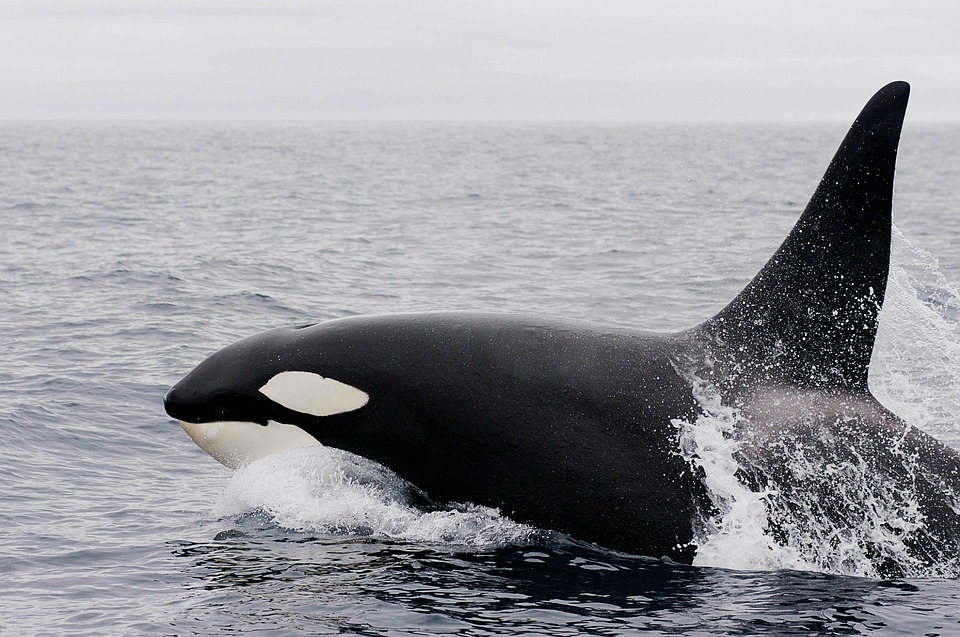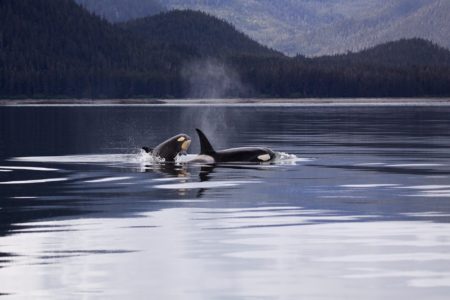How killer whales hunt

To merely call them the wolves of the sea is a gross underestimation
Killer whales aren’t whales (they are more closely related to dolphins) and it’s not fair to call them killers either. There are no confirmed cases of fatal attacks on humans by killer whales in the wild. But they are incredibly intelligent hunters – probably second only to humans. Killer whales, or orcas, can swim at 56 kilometres (35 miles) per hour (or 30 knots), they have teeth eight centimetres (three inches) long and their echolocation system allows them to find prey in complete darkness. But what really sets them apart is their ability to plan, improvise and work as a team.
Orcas live in loose family groups called pods, of five to seven individuals. In the wild their life span can be 60 years or more but the infant mortality rate is very high; up to half will die before they are seven months old. This is mainly due to the difficulty of finding enough food. Killer whales are mammals and their warm-blood metabolism uses a lot of energy. An adult needs 230 kilograms (510 pounds) of food a day.
To feed this appetite, some subspecies prey on schools of fish by circling below them and releasing a stream of bubbles to confuse them. Others have learned that they can catch sharks by flipping them on to their backs to induce a sort of panic stun, known as tonic immobility. The killer whales that hunt among the Arctic sea ice catch seals and walruses by knocking them off ice floes into the water.
These are not purely instinctive behaviours; orcas will teach their young, often deliberately catching and releasing a seal several times to allow them to practise hunting. In 2005 scientists observed a killer whale regurgitating fish at the water’s surface to lure seagulls down before catching the birds. Four other orcas subsequently learned this tactic.
Hunting as a pack

1. Lunging: Initially, a single orca may try to beach itself on the ice floe, snatch the seal and roll off.
2. Repositioning: If that doesn’t work, the killer whales will twist and push the floe away from other ice in the vicinity.
3. Spotter: One orca now positions itself behind the seal and blows through its blowhole to signal the attack run
4. Formation swimming: The other orcas then swim as fast as possible to generate a large bow wave in front of them.
5. Wipeout: At the last moment, they duck under the ice and the wave often washes the seal towards the waiting spotter.
6. School of whales: A young orca watches the co-ordinated attack to learn this hunting technique.
This article was originally published in How It Works issue 34, written by Luis Villazon
For more science and technology articles, pick up the latest copy of How It Works from all good retailers or from our website now. If you have a tablet or smartphone, you can also download the digital version onto your iOS or Android device. To make sure you never miss an issue of How It Works magazine, subscribe today!




